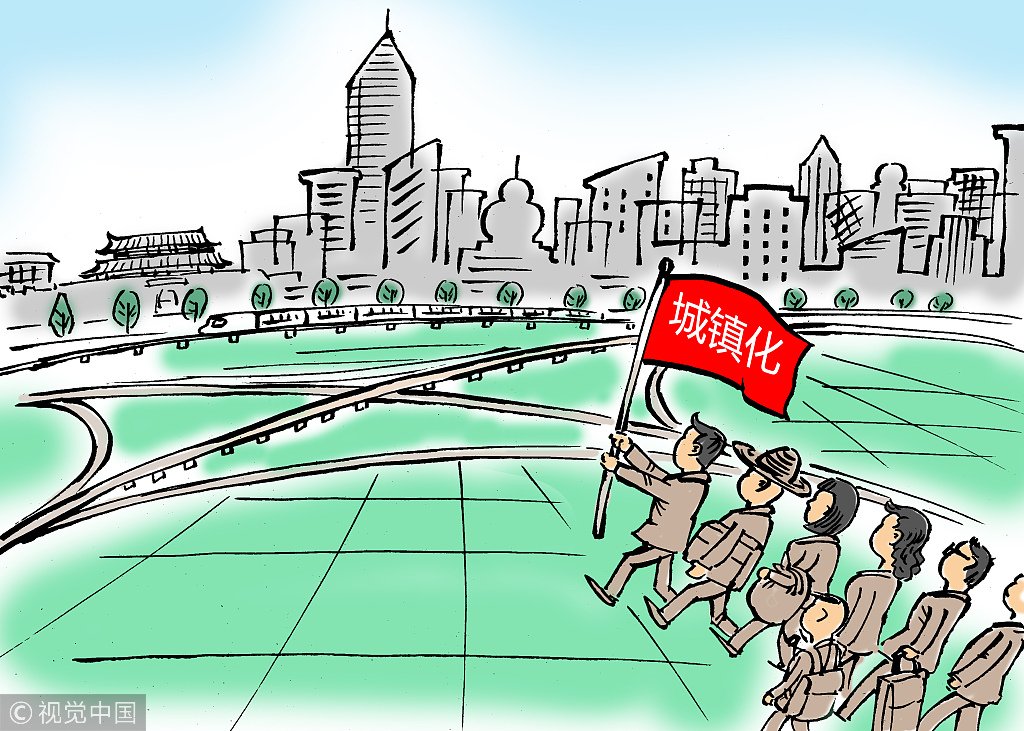This year's annual conference of the Boao Forum for Asia (BFA) was hosted in Boao, a coastal town in China's southern island province of Hainan from March 26 to 29 following the theme of "Shared Future, Concerted Action, Common Development".
The idea of "future development" has been a burning issue for both domestic and international communities to determine the way forward in building future urban zones.
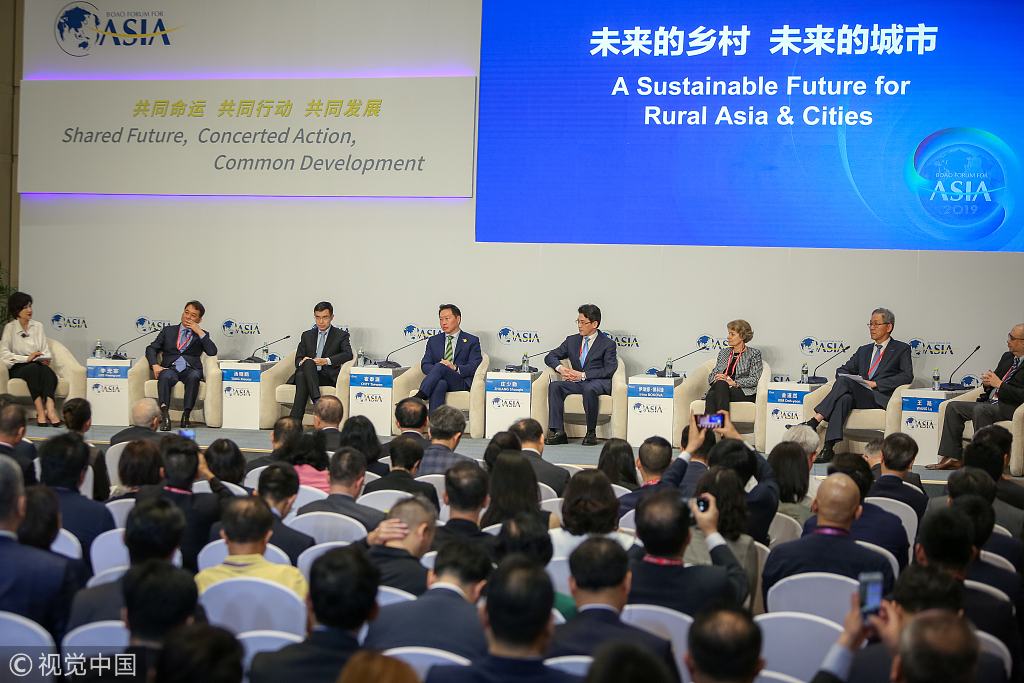
A session titled "A Sustainable Future for Rural Asia & Cities" underway at the Boao Forum for Asia, March 29, 2019. /VCG Photo
A session titled "A Sustainable Future for Rural Asia & Cities" underway at the Boao Forum for Asia, March 29, 2019. /VCG Photo
Urban rise = rural loss?
With the rise of industrialization and urbanization, rural areas in developing countries are inevitably suffering from downfall and depression. How to strike a balance between urbanization and rural development has been the biggest question for many countries for decades.
China has experienced rapid economic development over the past four decades since the implementation of the reform and opening-up policy in 1978, which has accelerated the improvement and integration of rural and urban areas. However, some people also raise concerns about possible destruction of rural lands as a result of advancing urbanization.
Cai Fang, the vice president of Chinese Academy of Social Sciences (CASS), pointed out that it was a misunderstanding to antagonise both sides in the press conference of China's Rural Development Report (2018).
He said the essence of urban-rural integration is to ensure that the benefits of development and growth reach all citizens – whether they move to mega cities, smaller towns, or live in rural settings.
"Urbanization in China has made unprecedented progress, bearing witnesses to the country's transition from a traditional big agricultural nation to a modern manufacturing power. China's once backward rural society is turning into an affluent urban one."
Based on the report, China's urbanization rate has increased 58.5 percent with an average annual growth of 16.4 million urban people. It has made a great contribution of 25.6 percent increase in world population in the past 40 years.
However, rapid urbanization also accompanied some adverse impact on social productivity improvement and limited resources distribution. One obvious phenomena of urbanization is traffic congestion that's barely seen in villages.
Actually, not only China, many developed countries have been through these problems as well.
China's Rural Revitalization Strategy
As a result, in 2017, Chinese President Xi Jinping first put forward the idea of "implementing the strategy of rural revitalization" during the 19th CPC National Congress, and called it a major strategy with fundamental impact on national livelihood.
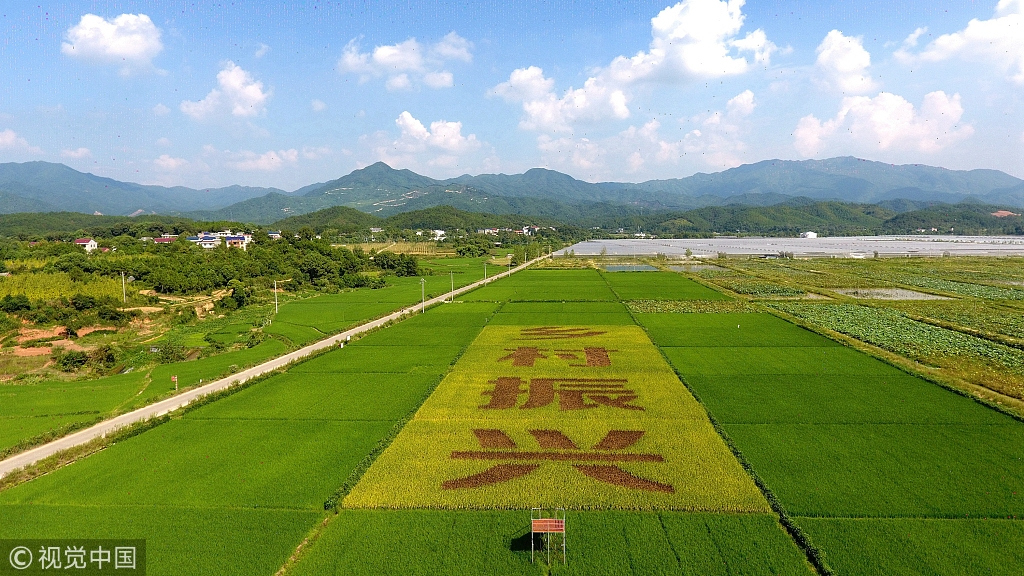
Local villagers make use of a paddy field to spell the Chinese characters of "rural revitalization" in Jishui County, east China's Jiangxi Province, August 13, 2018. /VCG Photo
Local villagers make use of a paddy field to spell the Chinese characters of "rural revitalization" in Jishui County, east China's Jiangxi Province, August 13, 2018. /VCG Photo
As a big agricultural country with a long history, agriculture is the backbone of Chinese economy. The implementation of this strategy plays a significant role in China's journey to becoming a well-off society by 2020 and a modern powerful socialist one.
In 2018, the CPC Central Committee and the State Council issued the 2018-2022 Strategic Planning for Revitalization of Rural Areas (the "Planning") in a bid to foster new growth drivers for rural development.
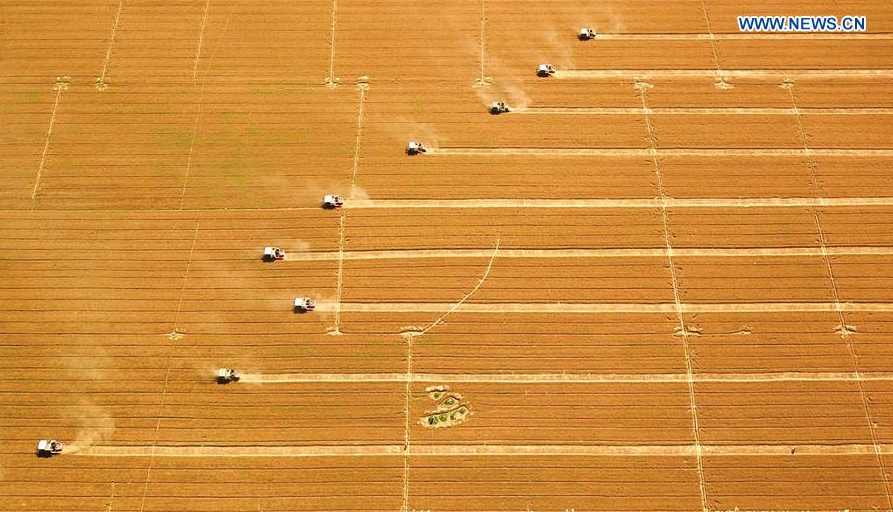
Farmers reap wheat at a farm in Xichen Village of Jiangwucheng Township in Cixian County, north China's Hebei Province, June 5, 2018. /Xinhua Photo
Farmers reap wheat at a farm in Xichen Village of Jiangwucheng Township in Cixian County, north China's Hebei Province, June 5, 2018. /Xinhua Photo
The "Planning" clearly indicated that developing intelligent agriculture and digitalization in agricultural production, operations, management, and services are vital for realizing agricultural modernization. Meanwhile, it noted that a three-year campaign is underway to improve rural living environment across the country, building beautiful and livable villages.
For example, China is stepping up efforts to carry forward toilet revolution and safe drinking water projects in rural areas. More rural roads are being built and more power grids in small towns and hub villages are being upgraded.
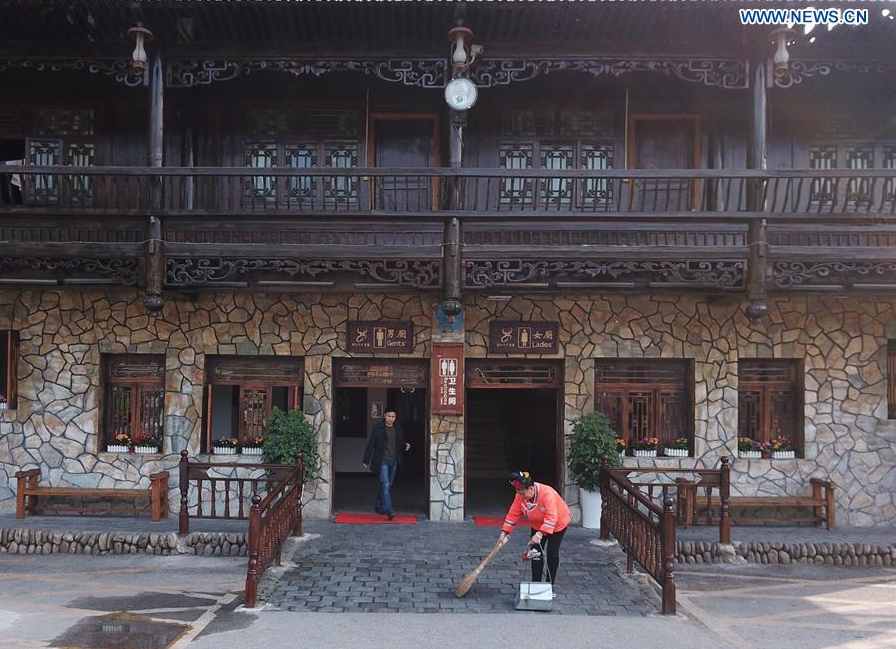
A public toilet in Xijiang Qianhu Miao Village in Leishan County, southwest China's Guizhou Province. /Xinhua Photo
A public toilet in Xijiang Qianhu Miao Village in Leishan County, southwest China's Guizhou Province. /Xinhua Photo
And the government continues to loose permanent residency policies in large-and-medium-sized cities. Rural household registration holders living in urban areas can now obtain permanent urban residency with greater ease.
In addition, strong progress is also being made in the development of a system for basic public services, mainly covering education, healthcare, culture and tourism, fitness and social service.
According to the Report on China's National Economic, Social Development Plan, which was approved at the second session of the 13th National People's Congress in March, China's retention rate of nine-year compulsory education has reached 94.2 percent, and the enrollment ratio for high school education has reached 88.8 percent, while government spending on education remains above four percent of the GDP.
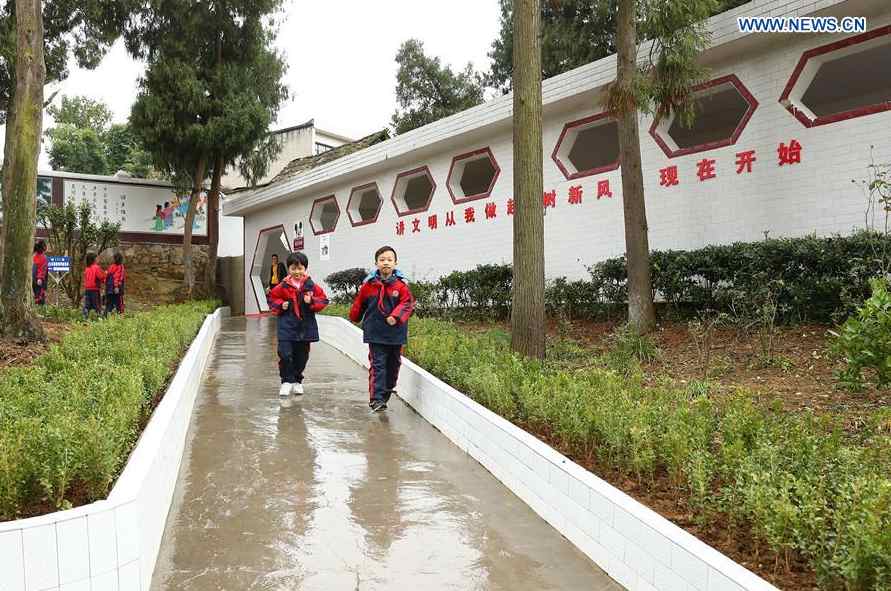
Students walk past a newly-built flush toilet at a primary school in Zhijin County, southwest China's Guizhou Province, October 23, 2018. /Xinhua Photo
Students walk past a newly-built flush toilet at a primary school in Zhijin County, southwest China's Guizhou Province, October 23, 2018. /Xinhua Photo
"Internet Plus Medical and Healthcare" model is developing rapidly and public hospital reform has also made substantial progress.
At the end of 2018, China announced that a zero-tariff policy would be applied to all imported cancer treating drugs from 2019.
Innovation plan for city cluster
"China has entered into the era of city cluster," said professor Liu Xuemin, the director of the Center for City Cluster Research at Beijing Normal University, during a session at the Boao Forum for Asia on Wednesday.
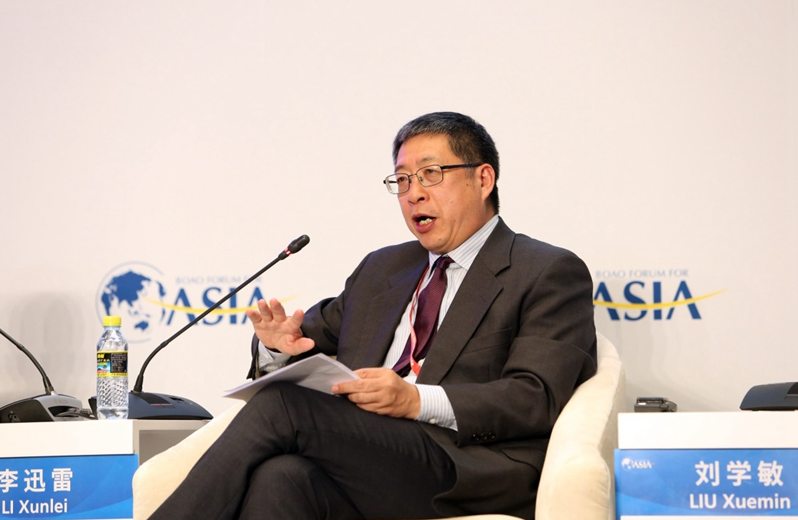
Liu Xuemin, director of the Center for City Cluster Research at Beijing Normal University, speaks during a session at the Boao Forum for Asia, March 27, 2019. /VCG Photo
Liu Xuemin, director of the Center for City Cluster Research at Beijing Normal University, speaks during a session at the Boao Forum for Asia, March 27, 2019. /VCG Photo
"A hefty investment of 66.4 billion yuan (10.53 billion U.S. dollars) was injected into a modern service district devoted to industrial convergence among Beijing, Tianjin and Hebei last year, involving 393 projects. By the end of 2020, around 1,000 manufacturing industries and 300 logistics centers in Beijing will be either shut down or relocated to nearby places, as part of efforts to relieve Beijing's non-capital functions. Beijing-Tianjin-Hebei cluster is refreshing. On the Yangtze Economic Belt, the pattern of close coordination on environmental protection was also consolidated effectively in recent years."
In 2019, China officially unveiled the Development Plan for Guangdong-Hong Kong-Macao Greater Bay Area (GBA), which explicitly presents to build world-class city cluster and a leading global innovation and technology center. The Greater Bay Area is also viewed as playing an important role in the implementation of the Belt and Road Initiative, he added.



